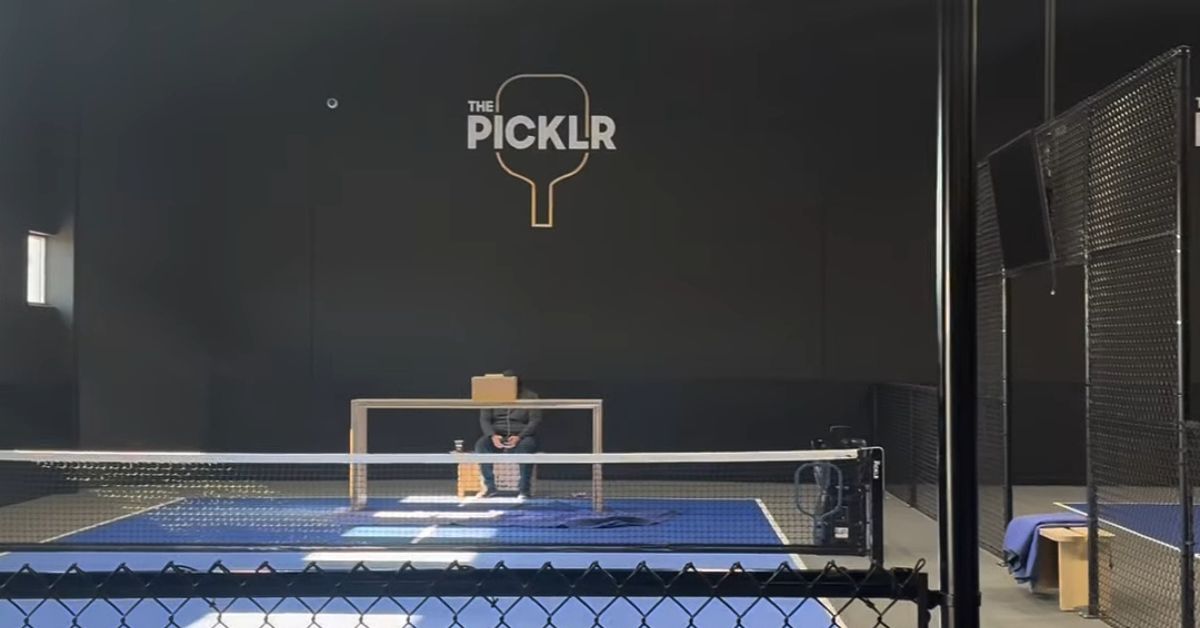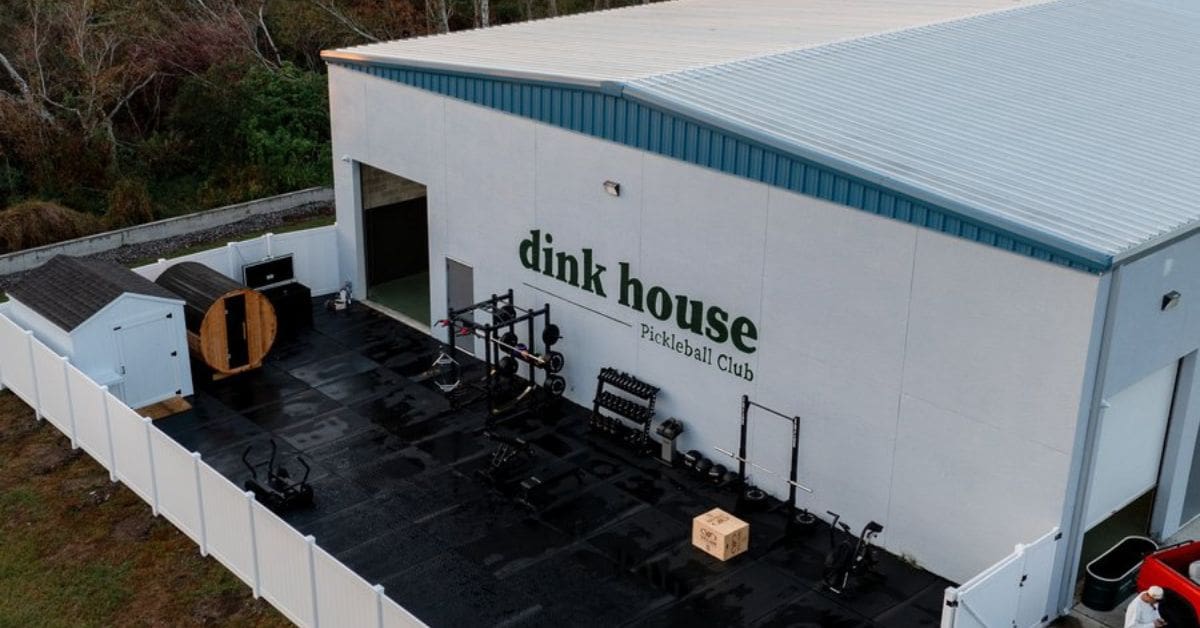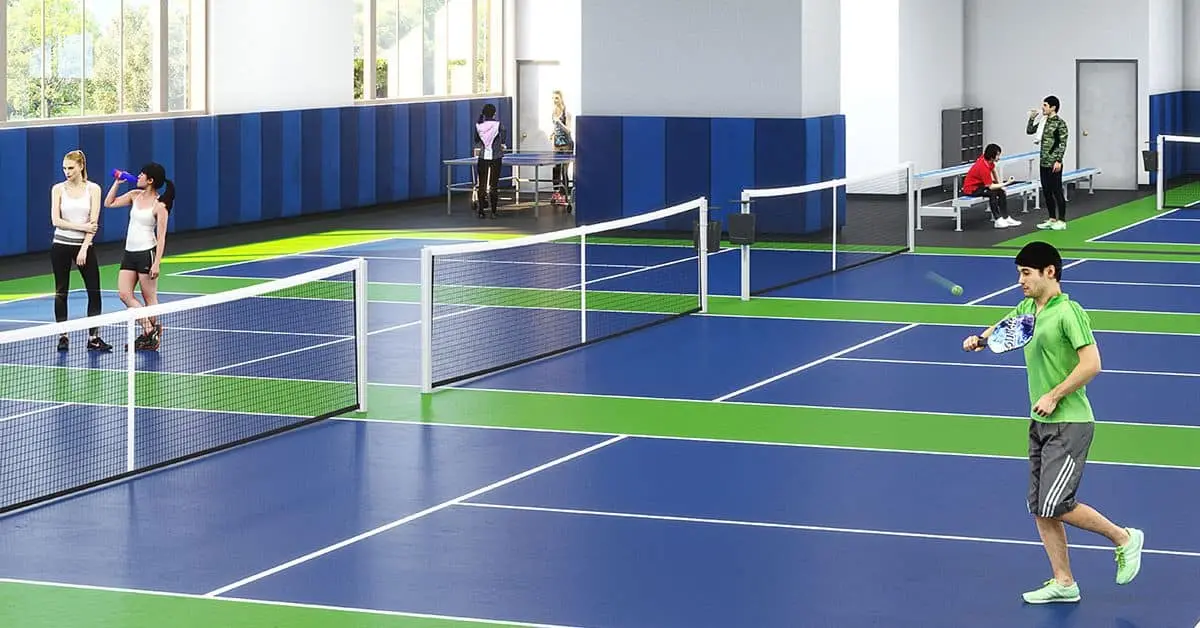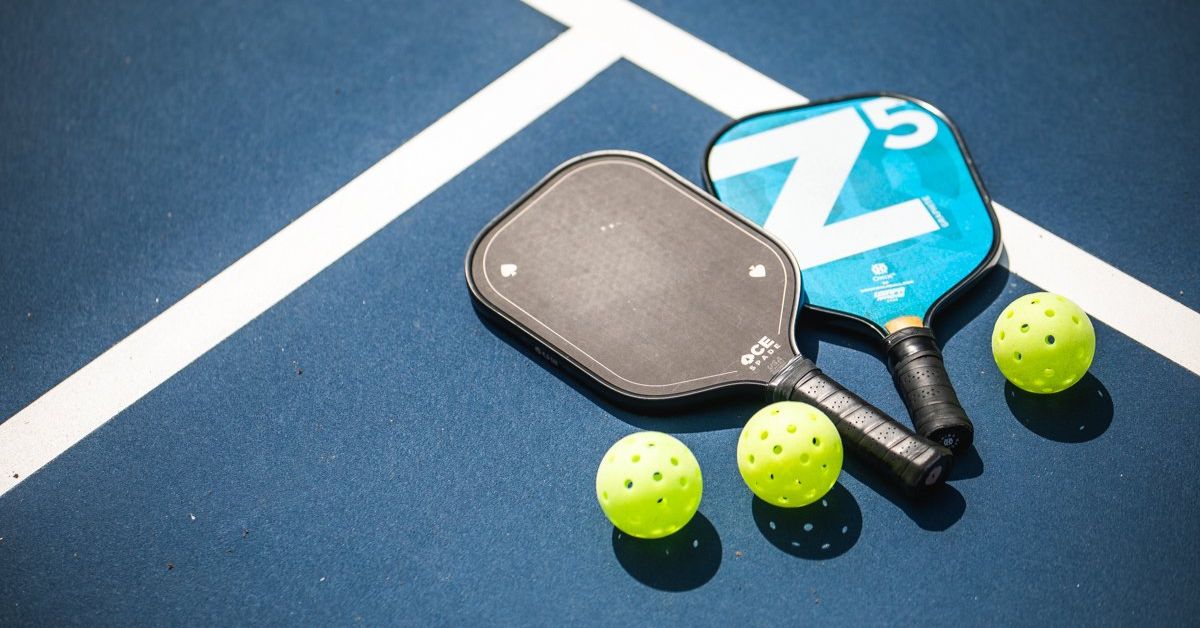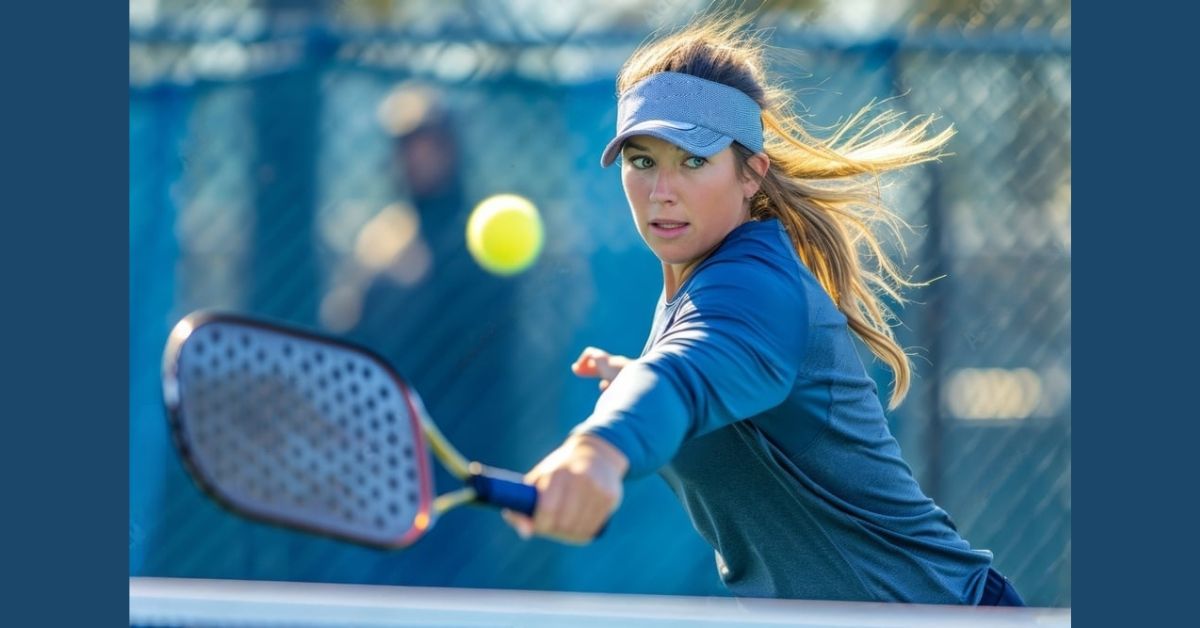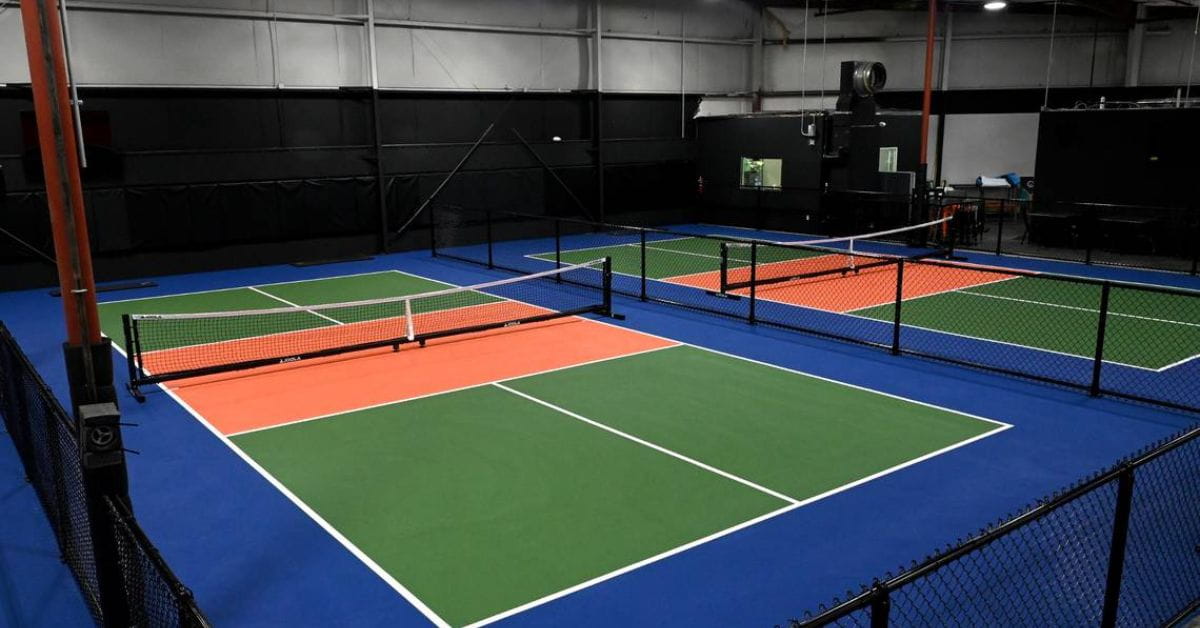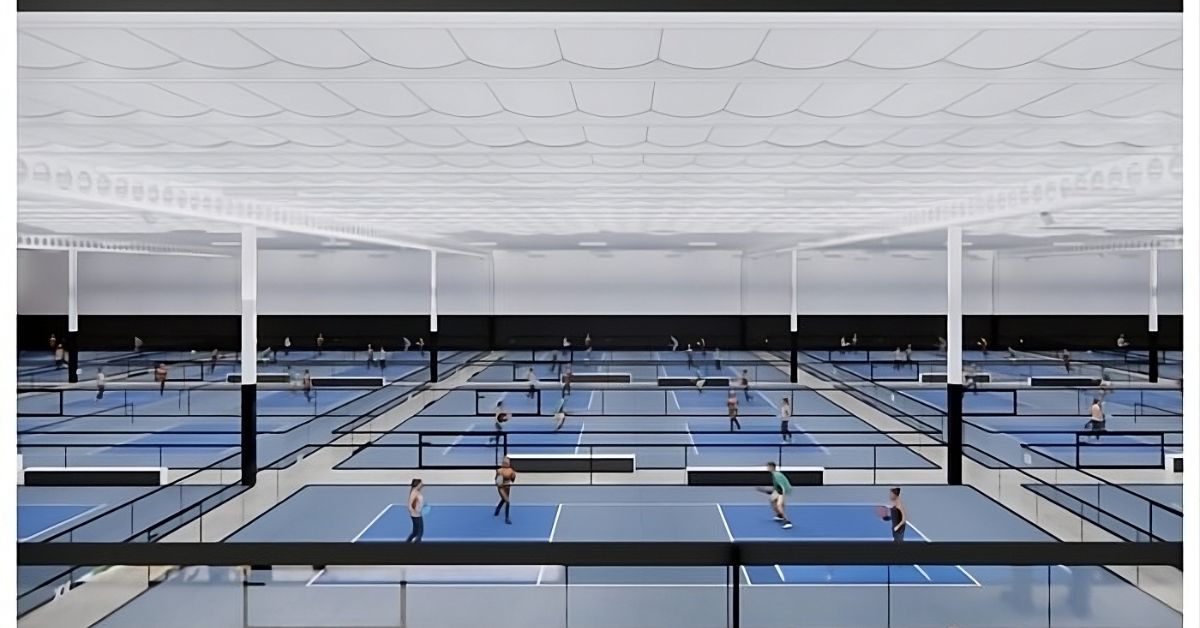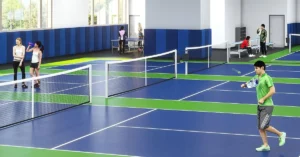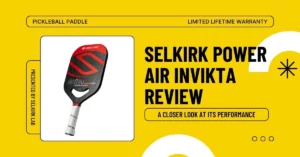Pickleball paddle material knowledge is must for any skill pickleball player.
Wondering which best material for pickleball paddle would greatly help you enhance your pickleball game?
With quite a few online and market alternatives, choosing the proper one based on your gambling style and ability level may be overwhelming.
Many aspects are also considered while choosing someone’s desire for an excellent pastime; the best pickleball paddles under $100 let you test the affordability of the detail.
Even when choosing a pickleball paddle material, several factors should be considered, including weight, grip duration, and well-known feel.
Selecting a brilliant paddle made from a suitable material can transform your performance on the court and improve your regular playing enjoyment.
Each paddle is made from excellent materials, each with unique traits and advantages. Understanding the differences among paddle materials can help you decide which is outstanding and suitable.
In this blog, you will learn about the best material for pickleball paddles, so let’s begin.
Understanding Pickleball Paddle Material
When it involves playing pickleball, your desire for paddle material should make a big difference to your overall performance on the pickleball courts.
Every material offers particular benefits and traits, from lightweight graphite to durable aluminum.
Explore the diverse materials used in pickleball paddles and how they can impact your sport.
According to a recent survey, 67% of pickleball palyers agree paddle material technically impacts gameplay enjoyment.
Now, let’s discuss the data of every material based on the pickleball paddle reviews and what sets them apart:
Types of Pickleball Paddles
Graphite
Graphite paddles are renowned for their lightweight but strong production.
They offer fantastic maneuverability and control, making them popular among gamers who value finesse and precision in their snapshots.
Graphite might be the way to go if you’re looking for a paddle to position your shots accurately.
Composite
Composite paddles are made using a mix of fiberglass, carbon fiber, or other composite materials.
These paddles stabilize power and control, making them flexible alternatives suitable for gamers of all expertise levels.
Whether you’re a newbie or a seasoned pro, a composite paddle can offer the correct combination of overall performance and consistency.
Wood
Individuals who understand a more excellent conventional feel always compare wood vs fiberglass pickleball paddles.
Timber pickleball paddles offer a conventional playing enjoy. While wood paddles may lack the strength and precision of their graphite or composite counterparts, they have a totally unique allure that resonates with many game players.
If you are interested in the nostalgia of wood paddles, you can find plenty of alternatives.
Aluminum
Aluminum paddles are prized for their durability and strength. They can resist the pains of severe gameplay and effortlessly supply strong, competitive shots.
While they may be heavier than exclusive materials, aluminum paddles provide the strength and stability needed to dominate the pickleball court.
Also comparing carbon fiber vs fiberglass pickleball paddle:
Carbon Fiber
Carbon fiber is an inflexible, durable material that delivers a refined touch & feel. The material absorbed a pickleball’s energy at impact and more evenly distributed it across the face of the paddle.
As a result, a carbon fiber pickleball paddle is a high-quality, performance-oriented option that offers many benefits.
Fiberglass
Fiberglass is a composite material with less stiffness than carbon fiber, which means it will be more flexible on contact, or in other words, deliver more rebound as the ball hits the paddle surface.
The result is a more significant energy return to the ball resulting in a more powerful response.
Key Characteristics of Pickleball Paddle Material
Weight
Graphite and composite paddles, regarded for their lightweight advent, allow quick reactions and are easy to manage. On average, graphite paddles are 20% lighter than aluminum ones.
Power
Aluminum and specific composite paddles provide extensive energy, which is exceptional for aggressive gameplay. Aluminum paddles can generate up to 30% more pixel strength than wood paddles. Even wood or fiberglass pickleball paddles offer power moves because of their unique characteristics.
Control
Graphite and high-quality composite paddles excel in offering particular manipulation, taking into account accurate shot placement. Players who use graphite paddles record a 15% boost in shot accuracy compared to wooden paddles.
Durability
Graphite and composite materials are regarded for their sturdiness. They can withstand repeated use without performance decline. Graphite paddles have a mean 25% longer lifespan than wood paddles.
Considering each material’s characteristics, you must pick a padel according to it best features and charcterstics.
Factors to Consider When Choosing a Pickleball Paddle Material
Playing Style and Skill Level
- Consider if you prioritize finesse or power in your game.
- Lightweight materials like graphite suit finesse players, while aluminum may benefit power players.
Budget
- Determine your budget and balance it with desired features.
- Wooden paddles offer cost-effective options, while graphite and composite materials are higher-end.
Weight Preference
- Test paddles of varying weights to find your preference.
- Graphite for agility, aluminum for power, and wood for a traditional feel.
Environmental Considerations
- Evaluate how environmental factors may affect paddle performance.
- Graphite and composites are generally more resistant to moisture and temperature changes.
Durability
- Choose a material that can withstand frequent gameplay.
- Graphite and high-quality composites offer excellent durability, as do aluminum paddles.
Pros and Cons of Each Pickleball Paddle Material
This comprehensive comparison explores the advantages and drawbacks of various pickleball paddle materials.
| Material | Pros | Cons |
| Graphite | Lightweight, excellent maneuverability, reasonable control | May chip or crack with significant impact, higher price |
| Composite | Versatile, durable, good power | Some models may be heavy, relatively expensive |
| Wood | Traditional feel, cost-effective | Limited power and may require more maintenance |
| Aluminum | Highly durable, powerful | Heavier weight, less control compared to other materials |
Recommended Pickleball Paddle Materials for Different Players
Beginner Players
For beginners, lightweight and forgiving paddles with ample control are essential to develop skills effectively. The wood pickleball paddles and graphite are ordinary for beginners to understand the details.
- Graphite or composite paddles: Lightweight for control.
- Mid-weight composite paddles: Balance power and control.
- Wide-body shape paddles: The more prominent sweet spot for consistency.
Intermediate Players
Intermediate players benefit from versatile paddles that offer a balance between power and control and features to refine their playing style.
- Composite or hybrid paddles: Versatile for evolving style.
- Textured surface paddles: Enhanced spin control.
- Mid-weight or customizable weight paddles: Fine-tune feel and balance.
Advanced Players
Advanced players require high-performance paddles with precision, maneuverability, and consistency to match their refined skills and playing style.
- Graphite or carbon fiber paddles: Lightweight for precision.
- Narrow-body shape paddles: Increased maneuverability.
- Firm core paddles: Consistent power and control.
Tips for Maintaining Your Pickleball Paddle
All the players must follow the proper tips for all types of pickleball paddle care as each maintenance is different. The tips are as follow:
Cleaning and Storage
- Regular Cleaning: After each play consultation, wipe down your pickleball paddle with a moist material to remove dirt, sweat, or debris. Avoid harsh chemical compounds or strong cleaners, which might harm the paddle’s material.
- Deep Cleaning: Periodically, thoroughly clean your paddle using a slight soap and water solution. Gently scrub the floor with a smooth brush or sponge, then rinse very well, allowing it to air dry earlier than storing.
- Avoid Moisture: Keep your paddle completely dry before storing it to prevent moisture buildup, which may result in mildew or mold growth. Store your paddle in a groovy, dry area away from direct sunlight to preserve its integrity.
Protection from Elements
- Use a Cover: Use a shielding cover or case on your pickleball paddle to shield it from dust, dirt, and unintended damage sooner or later in transportation or garage. Choose a cover with padding or a hard shell for safety.
- Avoid Extreme Temperatures: Avoid exposing your paddle to immoderate temperatures, as prolonged exposure to warmth or cold can cause warping or harm to the paddle shield. Store your paddle interior at room temperature when not in use.
Regular Inspections
- Check for Damage: Inspect your pickleball paddle for any signs and symptoms of harm, together with cracks, chips, or dents. Pay particular attention to the edges and surface of the paddle, as those regions are more vulnerable to damage during gameplay.
- Repair or Replace: If your paddle is damaged in any way, take immediate action and deal with it to save you in addition to deterioration. Minor chips or scratches can frequently be repaired with a specialized paddle restore package, but the extra tremendous harm may even require replacing the paddle.
- Evaluate Grip and Cushion: Regularly examine the grip and cushioning of your paddle. Replace tired grips or cushions to preserve a comfy and secure grip during gameplay, reducing the chance of hand fatigue or damage.
Top-Rated Pickleball Paddles Across Materials
If you are confused about “Are pickleball paddles wood?” There is a list of top-rated materials that these paddles can be made of. For pickleball, paddle excellence with our selections across various materials ensures unparalleled performance for every player.
Graphite Paddles
- Selkirk Prime S2: Known for its high-quality management and maneuverability, these graphite paddles are preferred among players seeking precision and finesse.
- Engage Encore Pro: The Engage Encore Pro graphite paddle gives a mix of power and control, making it a favorite among intermediate and superior gamers searching for versatility in their gameplay.
Composite Paddles
- Onix Composite Z5: The Onix Composite Z5 paddle is truly regarded for its sturdiness and balanced overall performance, making it a famous choice for gamers of all talent tiers.
- Paddletek Tempest Wave Pro: Featuring a composite face and polymer center, the Paddletek Tempest Wave Pro offers fantastic power and control, making it perfect for aggressive play.
Wood Paddles
- Rally Meister Wood Paddle: The Rally Meister Wood Paddle is a wooden paddle known for its strong construction and traditional feel, making it a favorite among game players attempting to find a traditional gaming experience.
- Amazin’ Aces Wood Pickleball Paddle: The Amazin’ Aces Wood Pickleball Paddle is lauded for its affordability and sturdiness, supplying novice and informal game enthusiasts with a reliable choice for entertainment play.
Aluminum Paddles
- ProLite Titan Pro: The ProLite Titan Pro aluminum paddle is praised for its durability and power, making it a top preference among players who choose a more competitive playing style.
- Gamma Atomic 2.0: The Gamma Atomic 2.0 aluminum paddle combines strength and precision, offering game enthusiasts a responsive and dependable alternative to aggressive play.
Recap of key points
- We’ve explored the various materials used in pickleball paddles, including graphite, composite, wood, and aluminum.
- There are mentions of many studies conducted and the types of pickleball paddles, along with features to help you choose one option out of many available.
- Each material offers unique characteristics and benefits, such as lightweight maneuverability, durability, and power.
- Considerations like playing style, skill level, budget, and environmental factors are the main factors when choosing the suitable paddle material.
Conclusion
Lastly, the best pickleball paddle material varies primarily based on person alternatives, playing style, and skill level. Beginners may also find lightweight graphite or composite paddles valuable, while intermediate players pick bendy composite options.
Advanced players regularly opt for excessive-overall performance graphite or carbon fiber paddles. With a considerable substance available, it’s essential to discover suitable possibilities and search for advice to find the proper match for your desires.
Ultimately, choosing the suitable paddle material can extensively enhance your gameplay, make an effort to explore and find out what works best for you.


